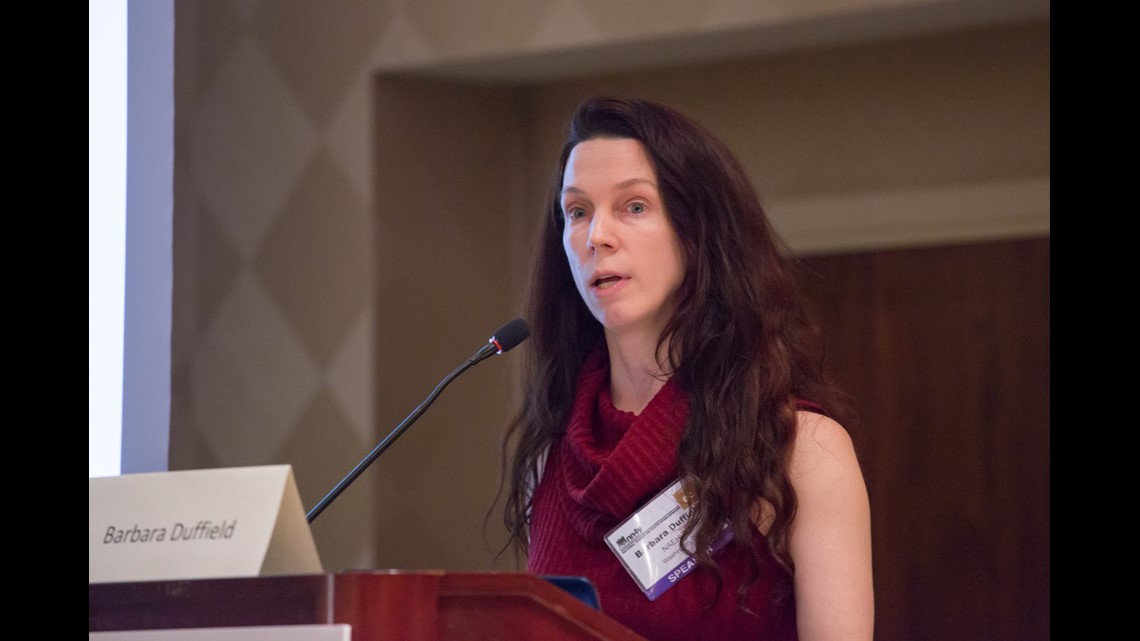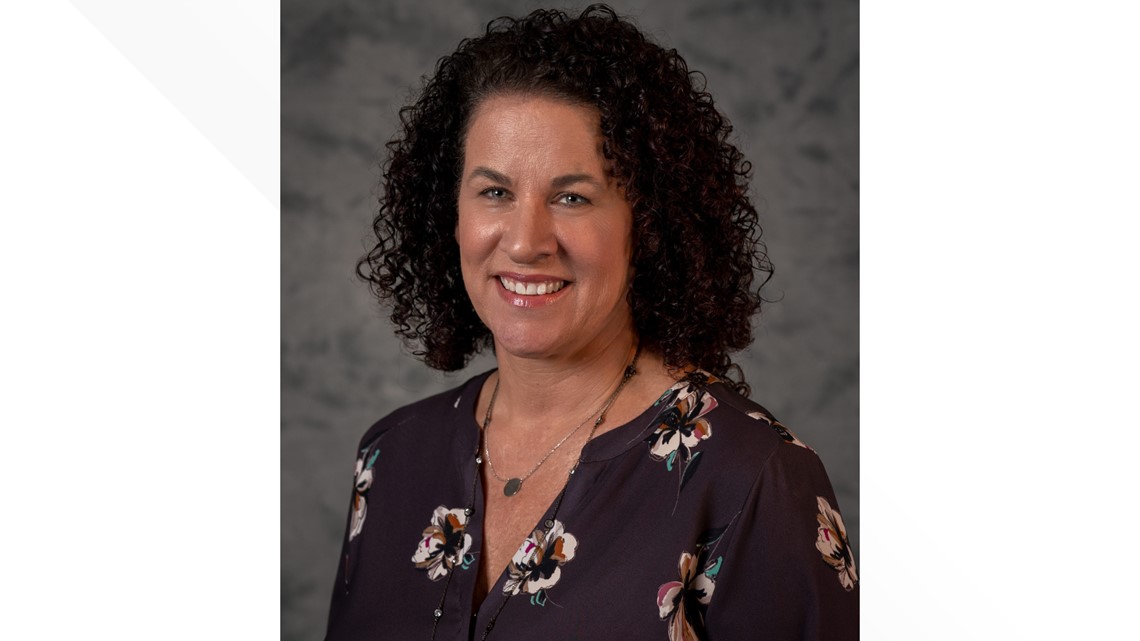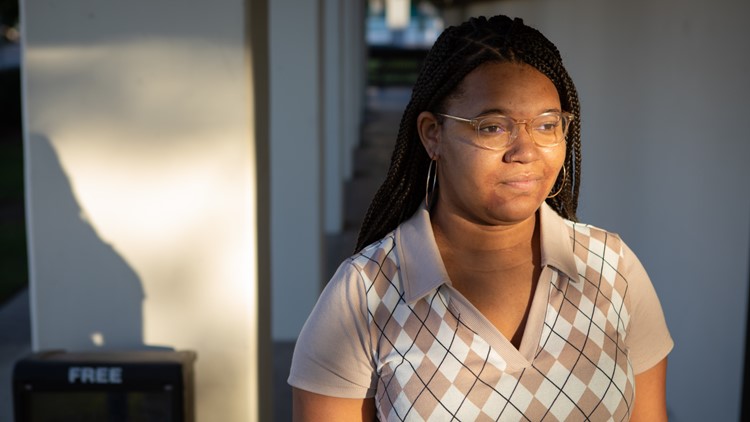SAN DIEGO — Ever since the onset of the COVID-19 pandemic, schools in California have reported a significant drop in the number of students identified as experiencing homelessness.
But those “self-reported” student counts by school districts are drastically undercounting the number of homeless students, advocates say, resulting in fewer resources available to assist students now and in the future.
In pre-pandemic times, California’s numbers steadily trended upward. Between 2015 and 2019, the number of K-12 students experiencing homelessness rose by 16,669, from 191,008 to 207,677.
But as COVID-19 spread throughout the country, California’s upward trend fell sharply. Between 2019 and 2021, the reported number of unhoused students across the state fell by 11.7%.
In San Diego County, the identified unhoused student population dropped by 2.2% during the 2020-2021 school year, from 15,989 to 15,629, a decrease that Susanne Terry, homeless liaison at the San Diego County Office of Education, says doesn’t align with what she’s been hearing on the ground.
While at first glance a downward trend in student homelessness seems to tell a promising story, advocates say this decline is no cause for celebration.
Remote learning and subsequent feelings of isolation have exacerbated an issue that has long plagued educators and advocates: identification.
A loss in the ability to identify unhoused students
Each year, public schools are required to report to the state the number of students experiencing homelessness. Schools must provide additional support for these students under the McKinney-Vento Homeless Assistance Act.
The act allows schools to provide assistance to unhoused students to ensure that they have the same access to a free and appropriate public education as all other students.
In order to identify which students are in need of McKinney-Vento assistance, each district employs a liaison: the person responsible for counting the number of students experiencing homelessness in their school, reporting that data to the county, and ensuring that unhoused students' needs are met. However, when learning moved online last year, this difficult job became more complicated.
Housing resources in San Diego County
inewsource put together a list of resources for unhoused youth and adults across the county. Read more.
Barbara Duffield, executive director of SchoolHouse Connection, a national nonprofit dedicated to overcoming homelessness through education, said that at the beginning of the pandemic, educators worried that they had lost track of some students experiencing homelessness.
A shift to online learning proved difficult for many students, but those experiencing homelessness had a unique set of challenges. Many struggled to find adequate internet connection and lacked the digital materials needed to work remotely. Unhoused students were hesitant to turn on their cameras and offer classmates a glimpse into their surroundings.


Additionally, the virtual world no longer provided liaisons and educators with the face-to-face check-ins they had come to rely on.
“Whether it's rerouting a school bus or whether it's the teacher who notices something or whether it's the family who checks the box on a form, or whether it's the ability to have a confidential conversation with a student that you notice something is going on [with]. The loss of in-person learning meant a loss of identification,” Duffield said.
The return of in-person learning hasn’t brought everyone back
Now, as in-person classes have resumed, it’s unclear whether all of the students who struggled during the digital divide have returned to the classroom.
Terry, the homeless liaison for the San Diego County Office of Education, said, “I think there's definitely a percentage of families that we just don't know. Like they just never came back when school went back in session.”
There are a variety of reasons behind children not returning to their old school. Terry suspects that some students were forced to move out of state in order to shelter with relatives. The threat of viral spread took away some families' usual communal living options like seeking shelters, or “doubling up” with other families to lessen the financial burden of living costs.
While classes were still taking place online, Terry received what she referred to as unprecedented calls from liaisons asking how they should serve students who had moved out of state due to COVID-related hardships.


There is some hope that, wherever these children landed, they have re-enrolled in school and are continuing their education. However, there’s lingering concern that many students experiencing homelessness simply dropped out as the barriers to continued learning grew too high.
According to Duffield, that concern has long-lasting impacts on unhoused youth and society as a whole.
“If students experiencing homelessness are not re-engaged — identified and re-engaged — in their learning and in their social and emotional and physical and mental health, the long-term implication is adult homelessness,” Duffield said.
She noted that at least 20% of adults who are homeless were homeless as children.“The pipeline to the homelessness that everybody is thinking about and looking at is this hidden population.”
A “hidden population” that has not completed their education means a higher rate of homelessness in the future. A lack of a high school degree is the single greatest risk factor for continuing to be homeless, according to SchoolHouse Connection.
“So we've got, right now, a recipe for a greatly expanded adult homeless population down the road if we're not proactive,” Duffield said.
A civil rights issue
In their latest study called “Lost In The Masked Shuffle and Virtual Void,” SchoolHouse Connection called the race to re-engage students a civil rights issue that is central to educational equity. They highlighted the disproportionate impact of homelessness on students of color.
Last month, the California Learning Institute released a research brief that found that in California, while Latino students represent around 55% of all students in grades K-12, they make up nearly 70% of all California students experiencing homelessness. Similarly, Black students represent around 6% of all students, but make up 9% of those experiencing homelessness in the state.
Statistics such as these emphasize the importance of identifying students in-need quickly and ensuring that they have the materials necessary to succeed. However, the digital divide isn’t the only barrier to accurate identification.
Why identification is difficult, even under normal circumstances
Families who haven’t established trust with their child’s school are often hesitant to disclose their struggles to school officials. A common reason for hiding unstable housing is concern that admitting these struggles will get Child Protective Services involved and risk a child being separated from parents.
Additionally, the stigma and shame surrounding homelessness prevents families from sharing. Terry says this is why districts should not rely on self-reporting only.
“It’s not their job to tell you,” Terry said. “When I do my trainings in San Diego County, I'm really clear about that with districts, that you're not - you're not fulfilling your obligation if you're only relying on families to report themselves.”
Another barrier to accurate data collection is the nature of the liaison position. “It’s usually not someone’s full-time job,” Terry said. A district’s liaison often holds one or two additional roles in the school, leaving inadequate time for the effort required in accurately identifying unhoused students.
Job attrition also plays a disruptive role in the collection of annual counts. Terry said the liaisons she works with often are not the same person from year to year. Because each liaison collects their data differently, the data can look vastly different from one year to the next.
In September, California made efforts to strengthen the accuracy of identification data.
A housing questionnaire was made mandatory under AB 27, a bill which was signed by Gov. Gavin Newsom. The bill requires that the questionnaire be provided by schools to families annually. According to Terry, the questionnaire includes a McKinney Vento question, which utilizes neutral language: not “homeless” or “residency.”
Fear of the system
For families experiencing homelessness, subtle changes in language matter. Destiny Dickerson spent her high school years in Rancho Cucamonga sleeping on family or family friends’ couches, in hotels, and in the back seats of cars.
Still, she didn’t think of herself as “homeless” until her mother sent her a college scholarship application for homeless youth. Dickerson thought that the word “homeless” only applied to those who slept on park benches or the streets.
Dickerson’s family worked hard to prevent the school from finding out about their unstable housing situation. Sometimes, they ended up sleeping in places an hour or two hours drive from school.
“We’d have to wake up super early to get to school on time,” Dickerson said. Her family worried that too many tardies would get her into trouble.
“That’s why we were so adamant about getting to school on time and if we were gonna be late, we just didn’t go at all,” Dickerson said.


Dickerson was a high-achieving student, which helped her form close relationships with her teachers and school officials. Even when she missed assignments, they assumed it was a simple mistake rather than an indication that something was wrong.
Her mother’s reasons for hiding their unhoused status differed from her own. According to Dickerson, “she was worried about like, you know, people looking down on her and stuff like that as more like a reputation type thing.”
But for Destiny, her fears centered around the system. “I had a fear of CPS. They’d be like these kids don’t have the correct environment, with the food scarcity and like all those things that were coming up for us and like, we’re not getting enough sleep. There was a worry that, you know, they were gonna try to take us away.”
But when Dickerson won a scholarship to San Diego State University offered by SchoolHouse Connection, her school was informed of her unhoused status. They were surprised, she said.
With only three months until graduation, her school rushed to assist her in any way possible. They waived fees for textbooks that had been stolen when her family’s car was broken into. They paid for her prom ticket, her yearbook, and even covered the cost of a prom dress. She was able to identify her younger sibling and cousin and ensure that their schools provided them with additional support.
For Dickerson, the school’s knowledge of her family's struggles ultimately worked to her advantage. But whether she would advise everyone to inform their school of an unstable housing situation? She’s not sure.
“I think it would depend on that person’s situation,” Dickerson said. “When I did, like, talk to other scholars who got the scholarship, there was a lot of like runaways and different stuff who were dealing with a lot more that could have gotten them in trouble.”
Three-year money
Despite fears of the system getting involved, Terry says homelessness is not a sufficient reason to make a report to CPS. Law AB 652 states that a youth’s status as homeless or unaccompanied is not in itself sufficient to warrant a report of child abuse or neglect.
Terry urges schools to rely on their mandated reporter training to discern when a report should be made.
One of the best practices she presents to districts is to have clear intent on all forms distributed to families and explain that information regarding homelessness is used to determine eligibility for services and not shared with any external agencies.
This year, clarifications such as these are even more important than usual, as accurate identification data will impact how much funding a school receives to serve unhoused students.
In March, President Biden signed the American Rescue Plan Act of 2021 into law. The law included an unprecedented bump in funding to support students experiencing homelessness —
$800 million meant to aid educational agencies in identifying homeless youth and providing them with wrap-around services to address the challenges caused by the COVID-19 pandemic.
California’s share of that fund amounts to $1.5 million, which is to be used before June 30, 2024, when the grant ends.
While additional funding has the potential to help liaisons and districts further their support for unhoused students, Terry expressed concern about the temporary nature of the grant. “So at the end of the three years what is the government going to do? Just let all these services go away?” Terry said.
Many say the additional funding is long overdue. Even before the pandemic and exacerbated challenges with identification, liaisons and support workers for unhoused youth have felt under-funded and overwhelmed by growing need.
“These impacts of the pandemic … losing students and students struggling to come back — all of those things — those are impacts we’re going to be feeling for longer than three years,” Terry said.
inewsource is a nonprofit, independently funded newsroom that produces impactful investigative and accountability journalism in San Diego County. Learn more at inewsource.org.



